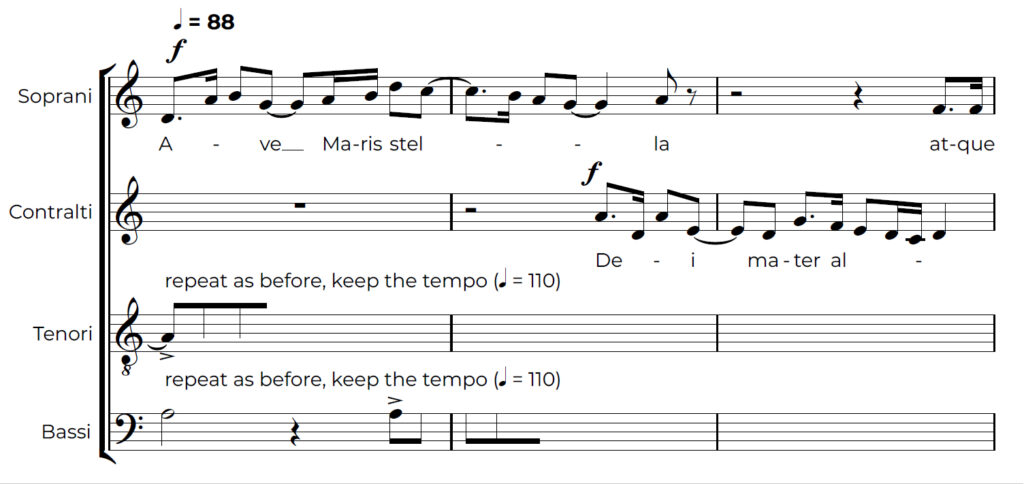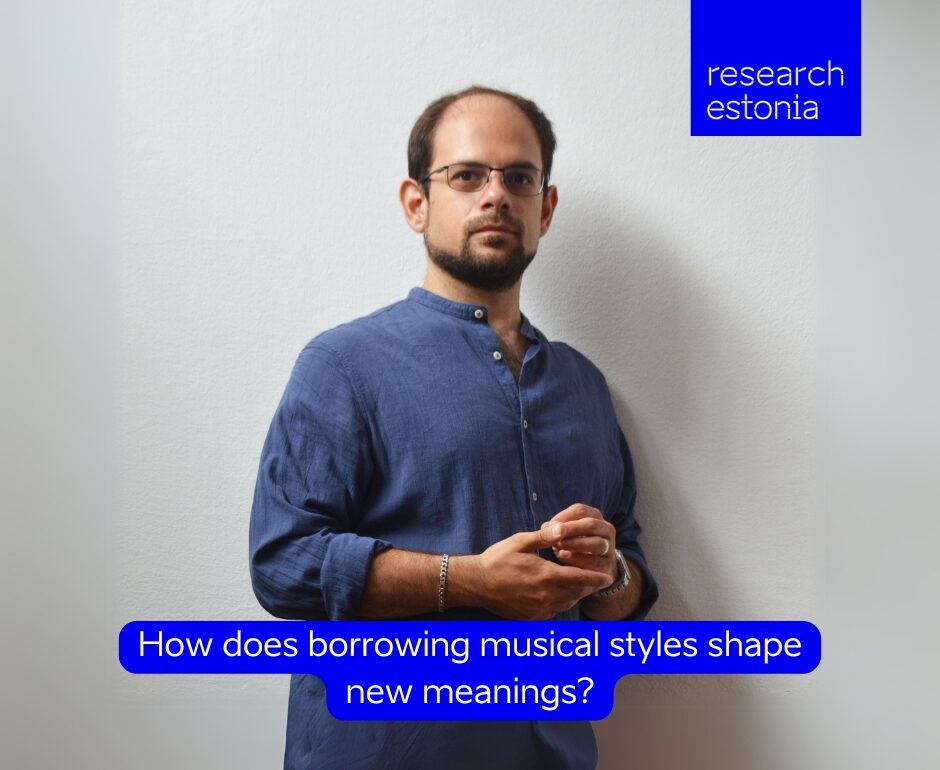The act of borrowing is not just the re-use of something but a way to give new life to existing ideas, to shape the narrative and convey meanings. For me, personally, it’s a way to reflect on myself and the society while expressing my ironic take on the material I borrow.
The borrowing act raises several questions: how does borrowing melodies or musical form create new musical material? And what is the artistic outcome, the meaning that such action conveys? For instance, why does Beyoncé quote country music on her last album? Why did Beethoven quote Mozart in Leporello? While this is material for musicologists or scandal magazines, as a composer researching the use of borrowing actions helped me discover myself.
Some common borrowing methods include quotation, paraphrasing, imitation, but I am particularly intrigued by allusion. In music, allusion is a reference to another work, style or convention without direct quotation. Instead, it draws on similarities in gesture, melody, rhythm, timbre, texture, or form.
One example of it can be seen in my own work Hommik for mixed choir, where through the allusion I combine two distinct singing styles: Gregorian chants and Estonian regilaul. Two cultures far apart in time and place are represented through their ways of singing, languages, and texts – a Catholic prayer in Latin and a poem in Estonian.
Although the musical material is originally composed, I borrow the rhythmic attitude, melodic contour, and harmony of both styles, making them recognizable. I also keep some of the main characteristics of both ways of singing, for instance: the repetition of the same note as corda di recita similarly to a Gregorian Chant, or the division of the verses of the Latin prayer into two voices as it happens usually in a regilaul.
from 0:30 to 0:50 (https://www.youtube.com/watch?v=wDq442KfpqU&ab_channel=Release-Topic).
Notably, the two figures show two different metronomic indications, with the males singing faster. This forced and contradictory situation creates a unique musical environment and an ironic contrast between these different musical materials. By using allusion, I borrow two distinct singing styles that represent two cultures. The piece slowly drives these two singing styles toward a unified ending when the choir sings “Amen” together.


Recognizing the allusion is key to understanding the new work. As one scholar noted, “once the borrowing is evoked, the exchange between the original and new work central to cultural agency, begins. That exchange, of course, can start only if the listener can recognize the quotation.” (Metzer, 2003: 6). It is crucial, then, to make the quotation, or in this case the allusion recognizable, only then can listeners interpret my elaborations. To recognize the quotation means to recognize the symbol that the quotation carries on.
Hommik shows a personal way of understanding borrowing action with an ironic twist, representing my condition as an Italian with his cultural background living in Estonia and trying to learn a new culture. Irony works as a rhetorical tool by placing two very different objects close together; one creates a context alien to the other. As the Italian writer Luigi Pirandello suggests, this serves to highlight aspects that may remain hidden when looking at the object in its natural environment.
The main features of divergent cultures are evident but at the same time the musical languages involved gain new or different qualities as it happened to me after seven years in Estonia. Mirroring the mutual adaptation that would happen in a real community, we may say that a similar development of cohabitation creates a new articulation in a musical sense.
Borrowing in art isn’t just a technique to create new works, but a meaningful way to reflect on symbols that represent our culture and ultimately, on how we and the society work and evolve.
Author of this article is Fabrizio Nastari from Estonian Academy of Music and Theatre. Editor Jaan-Juhan Oidermaa. Article written for the contest “Science in 3 minutes” organised by Estonian Academy of Sciences and The Estonian Young Academy of Sciences (EYAS). Main sponsor of the competition is Inclusive Financial Technology Foundation.
If this struck a chord with you, don’t miss a beat – tune into our next article for more harmonic insights into the world of music! Read more about what are the Tricks that make opera sound less incomprehensible?
 Back
Back



